




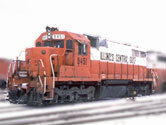

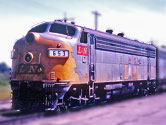
Fallen Flag

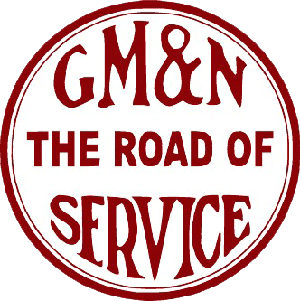 |
Gulf, Mobile & Northern Railroad"The Road of Service" / "Keep Your Freight Moving" |

Jackson, Ms / Sep 1937 / collection

 n 1930, Tom Martin, then editor of the Gulf, Mobile and Northern News, described the growth of the line he worked for in these words: "The story of the Gulf, Mobile & Northern Railroad is the story of the post-war South — of small and difficult beginnings undertaken by men of courage and of vision, of many vicissitudes; but of progress in the face of apparently insuperable difficulties." In 1930 it could be said that the GM&N truly had made progress. In 1920 such a statement might have been open to question. No one, however, could ever question that part of Martin's statement about small and difficult beginnings, for no railroad could have had a much more difficult start than the pieces of lines which by 1920 had been merged into the GM&N.
n 1930, Tom Martin, then editor of the Gulf, Mobile and Northern News, described the growth of the line he worked for in these words: "The story of the Gulf, Mobile & Northern Railroad is the story of the post-war South — of small and difficult beginnings undertaken by men of courage and of vision, of many vicissitudes; but of progress in the face of apparently insuperable difficulties." In 1930 it could be said that the GM&N truly had made progress. In 1920 such a statement might have been open to question. No one, however, could ever question that part of Martin's statement about small and difficult beginnings, for no railroad could have had a much more difficult start than the pieces of lines which by 1920 had been merged into the GM&N.
James H. Lemly
 he Gulf, Mobile & Northern Railroad was formed in 1917 through the reorganization of the New Orleans, Mobile & Chicago Railroad. The backbone of the GM&N was a north-south mainline from Jackson, Tennessee to Mobile, Alabama. Later expansion would take the road as far north as Paducah, Kentucky. Acquisitions in the early 1920s extended the regional system east to Meridian and west to Jackson from a major junction in the otherwise small community of Union, Mississippi. In order to leverage traffic agreements with northern railroads, the expanding GM&N took control of the New Orleans Great Northern Railroad in 1929. This lease brought access to the port city of New Orleans, Louisiana, via trackage rights at Slidell over the Southern Railway. The Gulf, Mobile & Northern was notable for operating an unusual streamlined passenger trainset known The Rebel from Jackson to Mobile, with a section that extended to New Orleans. On September 13, 1940, the GM&N merged with previous north-south neighbor the Mobile & Ohio to form the Gulf, Mobile & Ohio Railroad.
he Gulf, Mobile & Northern Railroad was formed in 1917 through the reorganization of the New Orleans, Mobile & Chicago Railroad. The backbone of the GM&N was a north-south mainline from Jackson, Tennessee to Mobile, Alabama. Later expansion would take the road as far north as Paducah, Kentucky. Acquisitions in the early 1920s extended the regional system east to Meridian and west to Jackson from a major junction in the otherwise small community of Union, Mississippi. In order to leverage traffic agreements with northern railroads, the expanding GM&N took control of the New Orleans Great Northern Railroad in 1929. This lease brought access to the port city of New Orleans, Louisiana, via trackage rights at Slidell over the Southern Railway. The Gulf, Mobile & Northern was notable for operating an unusual streamlined passenger trainset known The Rebel from Jackson to Mobile, with a section that extended to New Orleans. On September 13, 1940, the GM&N merged with previous north-south neighbor the Mobile & Ohio to form the Gulf, Mobile & Ohio Railroad.

1930 Official Guide ad / collection

letterhead / collection

at a glance
| 1929 | 1940 | ||
|---|---|---|---|
| Miles operated | 734 | 827 | |
| Locomotives | 77 | 55 | |
| Passenger cars | 39 | 31 | |
| Freight cars | 1573 | 1647 | |
| Service cars | 144 | ___ | |
| Reporting marks | GM&N | ||
| Headquarters | Mobile, Al | ||
| Named trains | The Rebel | ||
| Affiliated roads | Mississippi Export New Orleans Great Northern | ||
| Successors | Gulf Mobile & Ohio Illinois Central Gulf | ||

1928 timetable / collection

map of GM&N mainline segments remaining in operation / RWH

See also these shortline scrapbooks featuring former GM&N mainline:
- Mississippi Southern Railroad - Bay Springs to Ackerman, Ms
- Ripley & New Albany Railroad - New Albany to Ripley, Ms
- West Tennessee Railroad - segments around Jackson, Tn

See also our successor Gulf, Mobile & Ohio mainline scrapbook in our Rebel Routes family collection
Motive Power

collection

 arly power on the Gulf, Mobile & Northern's predecessor roads was a typical selection of second-hand Moguls and 4-4-0s. In 1904, as the road really began to expand, it started to acquire a small fleet of Ten-wheelers. In 1912 the New Orleans, Mobile & Chicago invested in a dozen more modern freight engines — eight 2-8-2s and four 4-6-2s. The Pacifies remained in freight service until 1921 when they were sold to the Louisville & Nashville and replaced with four more Mikados.
arly power on the Gulf, Mobile & Northern's predecessor roads was a typical selection of second-hand Moguls and 4-4-0s. In 1904, as the road really began to expand, it started to acquire a small fleet of Ten-wheelers. In 1912 the New Orleans, Mobile & Chicago invested in a dozen more modern freight engines — eight 2-8-2s and four 4-6-2s. The Pacifies remained in freight service until 1921 when they were sold to the Louisville & Nashville and replaced with four more Mikados.
During World War I, dozens of Russian Decapods roamed the South, and shortly after the USRA relinquished control, the GM&N bought ten of these machines. Soon three of them were equipped with "auxiliary locomotive" tender boosters. The road was apparently much impressed with these engines; when the time came to purchase new power later in the 1920s, the GM&N chose 15 more Decapods. Meanwhile, the older Ten-wheelers were being reworked in the company shops. Most of them were superheated and modified with a variety of driver and cylinder combinations; these were renumbered in the 170 and 180 series. Some of them were also equipped for passenger service. A few unaltered engines were used as switchers. Several Eight-wheelers were retained in passenger service, supplemented by a pair of ex-BR&P Atlantic types.
In 1928 the GM&N bought two pretty little Pacifies from Baldwin. One of them, the 425, has been preserved, and it operates today in excursion service on the Blue Mountain & Reading in Pennsylvania. The GM&N's last purchase of steam power was a group of second-hand switchers from the Indiana Harbor Belt.
Lease of the New Orleans Great Northern in 1933 brought with it some more Ten- wheelers and three more Russian Decapods, plus a trio of the smallest 4-8-2s ever built for freight service in the United States. Also acquired were two gas-electric train-sets with power cars numbered 350 and 351.
In 1935 the GM&N achieved fame with two motor trains named The Rebel, billed as the South's first diesel streamliners. Their power cars bore numbers 352 and 353; the 354 arrived in late 1937, with more cars to operate from both New Orleans and Mobile to Jackson, Tenn. Just after the merger, two Alco DL1O9 passenger units were added to power the new GM&O's Gulf Coast Rebel trains running through to St. Louis. When the Alton joined GM&O it brought 34 more diesels, and simultaneously a large group of new Alco freight units were being received. In October 1949 the GM&O achieved complete dieselization, one of the very first large railroads to do so.
William D. Edson

from Railroad Stories magazine
- May 1932 / collection
HawkinsRails thanks Mississippi railfan friend David Price for sharing his GM&N roster collection


Gulf, Mobile & Northern #10
Laurel, Ms / Jan 1940 / David Price collection


Gulf, Mobile & Northern #10
to Gulf, Mobile & Northern #10
to Gaylord Container Corp #10
to Charles Black Sand & Gravel #10


Gulf, Mobile & Northern #33
Jackson, Tn / Jan 1925 / David Price collection


Gulf, Mobile & Northern #33
to Gulf, Mobile & Northern #33
to Gulf, Mobile & Northern #133

 Rebel Route Survivor
Rebel Route Survivor

Gulf, Mobile & Northern #72
1928 / collection


Gulf, Mobile & Northern #72
to Gulf, Mobile & Northern #72
to Gulf, Mobile & Ohio #72
to Green Bros Gravel Company
on display, Franklinton LA


Jenkins, La / Oct 1961 / JCH

Jenkins, La / Oct 1961 / JCH

Jenkins, La / Oct 1961 / JCH

See also our Green Brothers Gravel Company scrapbook in Industrials
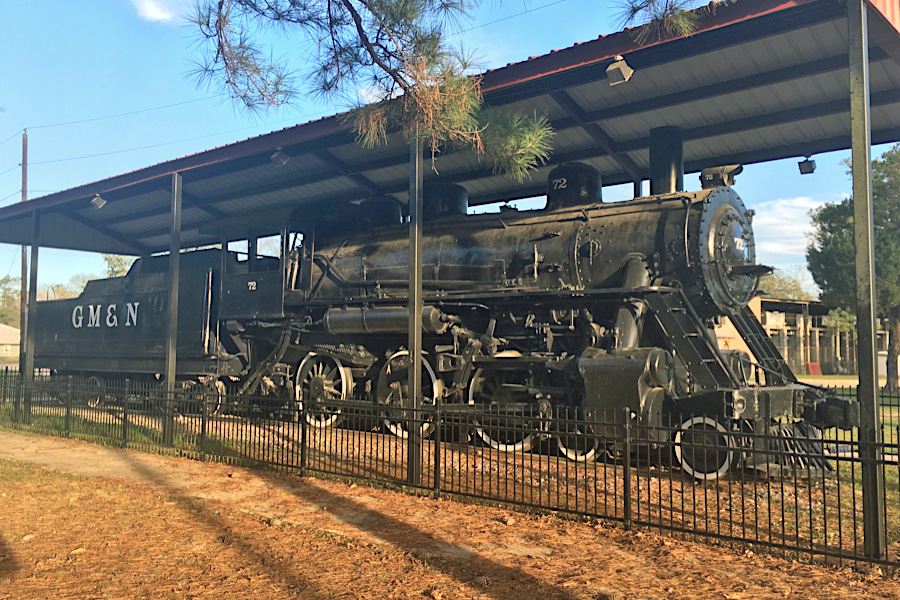
Franklinton, La / Dec 2016 / RWH

Dec 2016 / RWH

Franklinton, La / Dec 2016 / RWH

Dec 2016 / RWH

Franklinton, La / Dec 2016 / RWH

Gulf, Mobile & Northern #84
Mobile, Al / Aug 1933 / David Price collection


Gulf, Mobile & Northern #84
to Gulf, Mobile & Northern #84
to Gulf, Mobile & Northern #184


from Guide to North American Steam Locomotives
/ collection

Gulf, Mobile & Northern #92
Bogalusa, La / collection

Gulf, Mobile & Northern #92
to New Orleans Great Northern #92
to Gulf, Mobile & Northern #92
to Gulf, Mobile & Ohio #92


Gulf, Mobile & Northern #107
to Gulf, Mobile & Northern #107
to Gulf Mobile & Ohio #107


Gulf, Mobile & Northern #174
Jackson, Ms / 1938 / David Price collection


Gulf, Mobile & Northern #174
to Gulf, Mobile & Northern #74
modernized and renumbered #174
to Gulf, Mobile & Ohio #174


Gulf, Mobile & Northern #206
Meridian, Ms / Jul 1936 / David Price collection


Gulf, Mobile & Northern #206
to Gulf, Mobile & Northern #206
to Gulf, Mobile & Ohio #206


Gulf, Mobile & Northern #251
builder's photo / collection

Gulf, Mobile & Northern #251
to Gulf, Mobile & Ohio #251

The Gulf, Mobile & Northern owned ten "Russian" decapods and used them in heavy freight service, the heaviest power normally allowed between Laurel and Mobile due to bridge loadings on the two Leaf River bridges on that section of the line. The road acquired three more Russian 2-10-0's with their acquisition of the New Orleans Great Northern Railroad. Of the original ten, at least three were equipped with booster engines on the rear tender truck. This ten-coupled power set the course of heavy steam power on the GM&N, who acquired heavier 250-260 series Baldwin engines for most of their through freight work. The original ten Russians were all Baldwin engines, while the three acquired from the NOGN were American Locomotive Company (ALCo) products.
David Price


Gulf, Mobile & Northern #256
to Gulf, Mobile & Ohio #256


from Guide to North American Steam Locomotives
by George Drury / collection


Gulf, Mobile & Northern #261
to Gulf, Mobile & Ohio #261


Jackson, Ms / Oct 1940 / collection

Gulf, Mobile & Northern #401
Jackson, Ms / Sep 1937 / collection


Gulf, Mobile & Northern #401
to Gulf, Mobile & Northern #401
to Gulf, Mobile & Ohio #501

 Rebel in the North
Rebel in the North

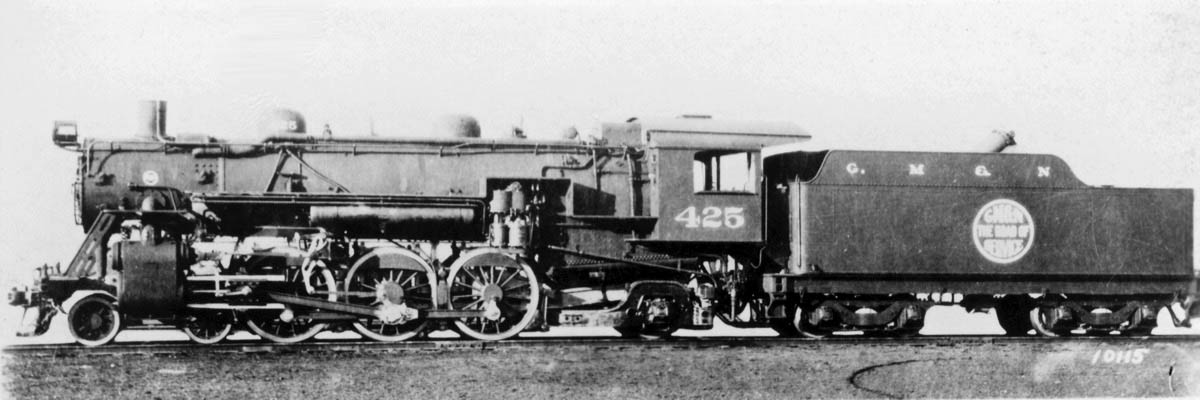
Gulf, Mobile & Northern #425
builder's photo / collection

Gulf, Mobile & Northern #425
to Gulf Mobile & Ohio #580, 1940
to Louisiana Eastern #4, 1950
to Valley Forge Scenic #425
to Wilmington & Western #425
to Reading & Northern #425


Louisiana Eastern #425
Shiloh, La / Apr 1958 / JCH

See also our complete Louisiana Eastern steam scrapbook in Shortlines

from Railroad Stories magazine
- May 1932 / collection

Blue Mountain & Reading #425
Hamburg, Pa / Aug 1989 / JCH

Aug 1989 / JCH

Hamburg, Pa / Aug 1989 / JCH

Hamburg, Pa / Aug 1989 / JCH

See also our complete Blue Mountain & Reading tourist scrapbook in Preservation

collection

Jim Thorpe, Pa / July 2010 / Dave Crosby
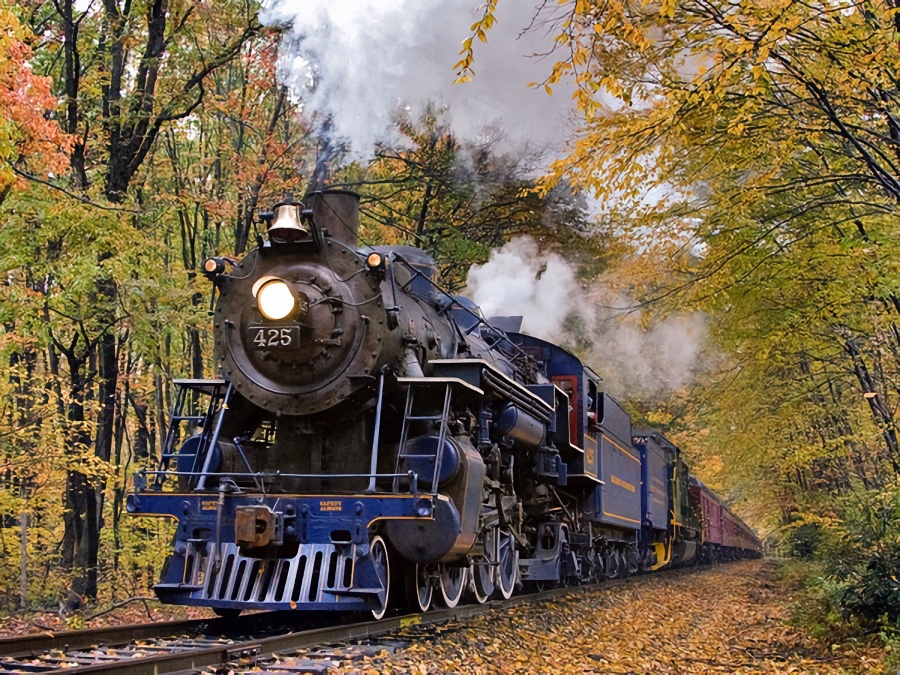
Mitch Goldman

See also our complete Gulf Mobile & Northern #425 featured scrapbook in Steam
"The Rebel"

collection

collection
 The Gulf, Mobile & Northern Railroad's daily trains #1 and #2, known as The Rebel made use of the first true streamliner passenger equipment operated in the Deep South, as well as one of the first lightweight streamliners used anywhere in the nation. Rivals included only the Baltimore & Ohio's (Alton) Royal Blue and Abraham Lincoln train sets, both of which would be inherited by GM&N successor Gulf, Mobile & Ohio through acquisition of the Alton Route in 1946. The Rebels were built with conventional (non-articulated) construction, allowing extra cars to be switched in and out as needed as section were combined or split at Union, Mississippi. Sets featured coach seating and a sleeper-observation car, with six sections for sleeping and a drawing-room.
The Gulf, Mobile & Northern Railroad's daily trains #1 and #2, known as The Rebel made use of the first true streamliner passenger equipment operated in the Deep South, as well as one of the first lightweight streamliners used anywhere in the nation. Rivals included only the Baltimore & Ohio's (Alton) Royal Blue and Abraham Lincoln train sets, both of which would be inherited by GM&N successor Gulf, Mobile & Ohio through acquisition of the Alton Route in 1946. The Rebels were built with conventional (non-articulated) construction, allowing extra cars to be switched in and out as needed as section were combined or split at Union, Mississippi. Sets featured coach seating and a sleeper-observation car, with six sections for sleeping and a drawing-room.

Gulf, Mobile & Ohio #353
"Rebel" power car (1935) / Murphysboro, Il / Apr 1945 / collection


Gulf, Mobile & Ohio #353
American Car & Foundry,
American Locomotive Company
to Gulf, Mobile & Ohio


collection

from Diesel Spotter's Guide
by Jerry Pinkepank - 1967 / collection

from Gulf Mobile & Ohio Historical Society News
/ collection

1937 Official Guide ad / collection

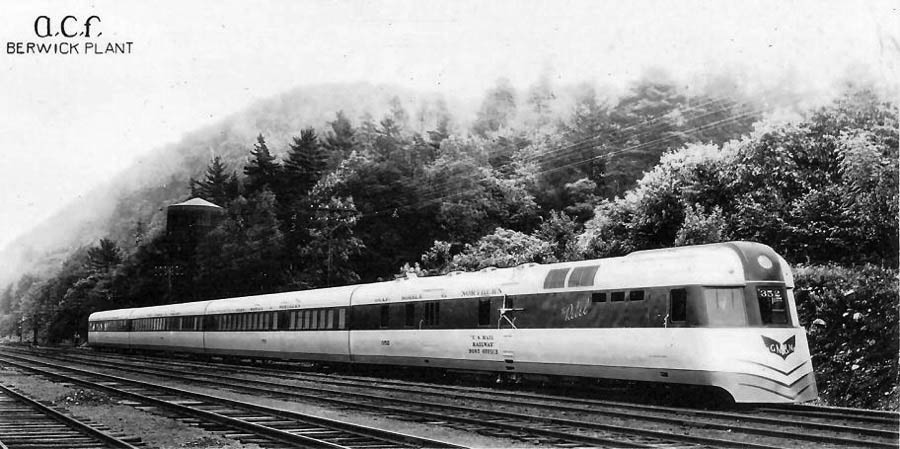 The Rebel cars, including the power cars, were built at ACF's Berwick, Pennsylvania, plant with Alco-Westinghouse traction equipment. The trains were not articulated, and their operation required switching cars in and out en route. The power car had mail and baggage compartments. A Jim Crow buffet-coach and an observation-sleeper made up the basic consist of the original two Rebels, with an extra coach switched in between Jackson, Mississippi, and New Orleans, where traffic was the heaviest. Power car #354, added in 1937, was distinguished by having about twice the radiator space in the roof as compared to the original two cars, though mechanically it was nearly identical. It handled a sing combination sleeper and coach from Mobile, Alabama, to Union, Mississippi, where the northbound car was cut into the mainline Rebel and a sister car was picked up from the southbound Rebel for return with #354 to Mobile.
The Rebel cars, including the power cars, were built at ACF's Berwick, Pennsylvania, plant with Alco-Westinghouse traction equipment. The trains were not articulated, and their operation required switching cars in and out en route. The power car had mail and baggage compartments. A Jim Crow buffet-coach and an observation-sleeper made up the basic consist of the original two Rebels, with an extra coach switched in between Jackson, Mississippi, and New Orleans, where traffic was the heaviest. Power car #354, added in 1937, was distinguished by having about twice the radiator space in the roof as compared to the original two cars, though mechanically it was nearly identical. It handled a sing combination sleeper and coach from Mobile, Alabama, to Union, Mississippi, where the northbound car was cut into the mainline Rebel and a sister car was picked up from the southbound Rebel for return with #354 to Mobile.
Jerry Pinkepank / Second Diesel Spotter's Guide
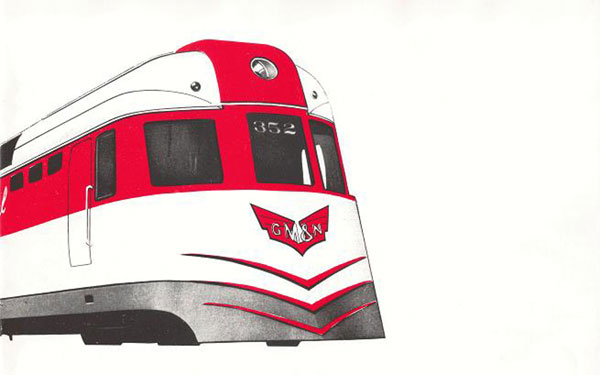
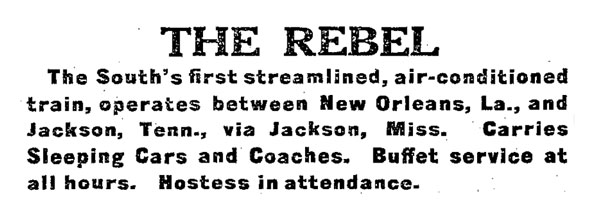
1937 Official Guide ad / collection

New Albany, Ms / collection

Jackson, Ms / collection

Bogalusa, La / collection

New Orleans, La / collection
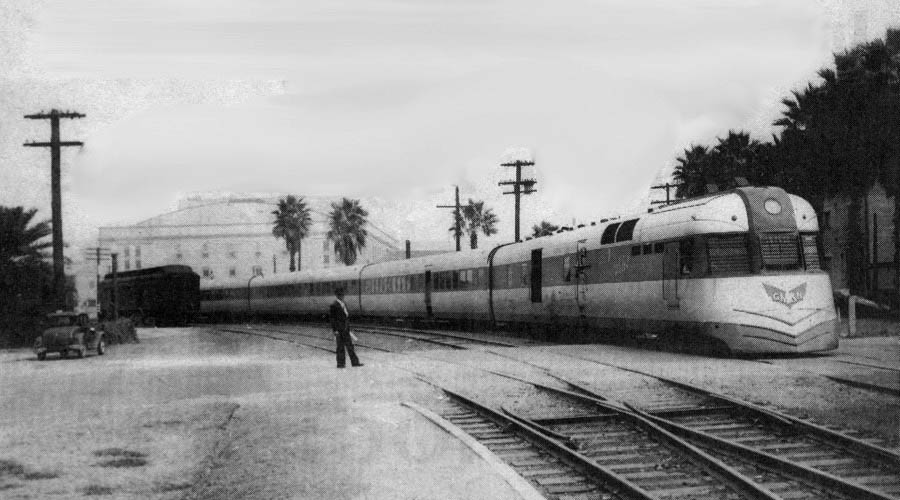
New Orleans, La / collection

from New Orleans Times-Picayune
newspaper - Oct 1990 / collection
Publications

1910 Official Guide ad / collection

1920 Official Guide ad / collection

1920 Official Guide ad / collection

1920 Official Guide ad / collection

1910 Official Guide ad / collection

1920 Official Guide ad / collection


1930 Official Guide ad / collection

1930 Official Guide ad / collection
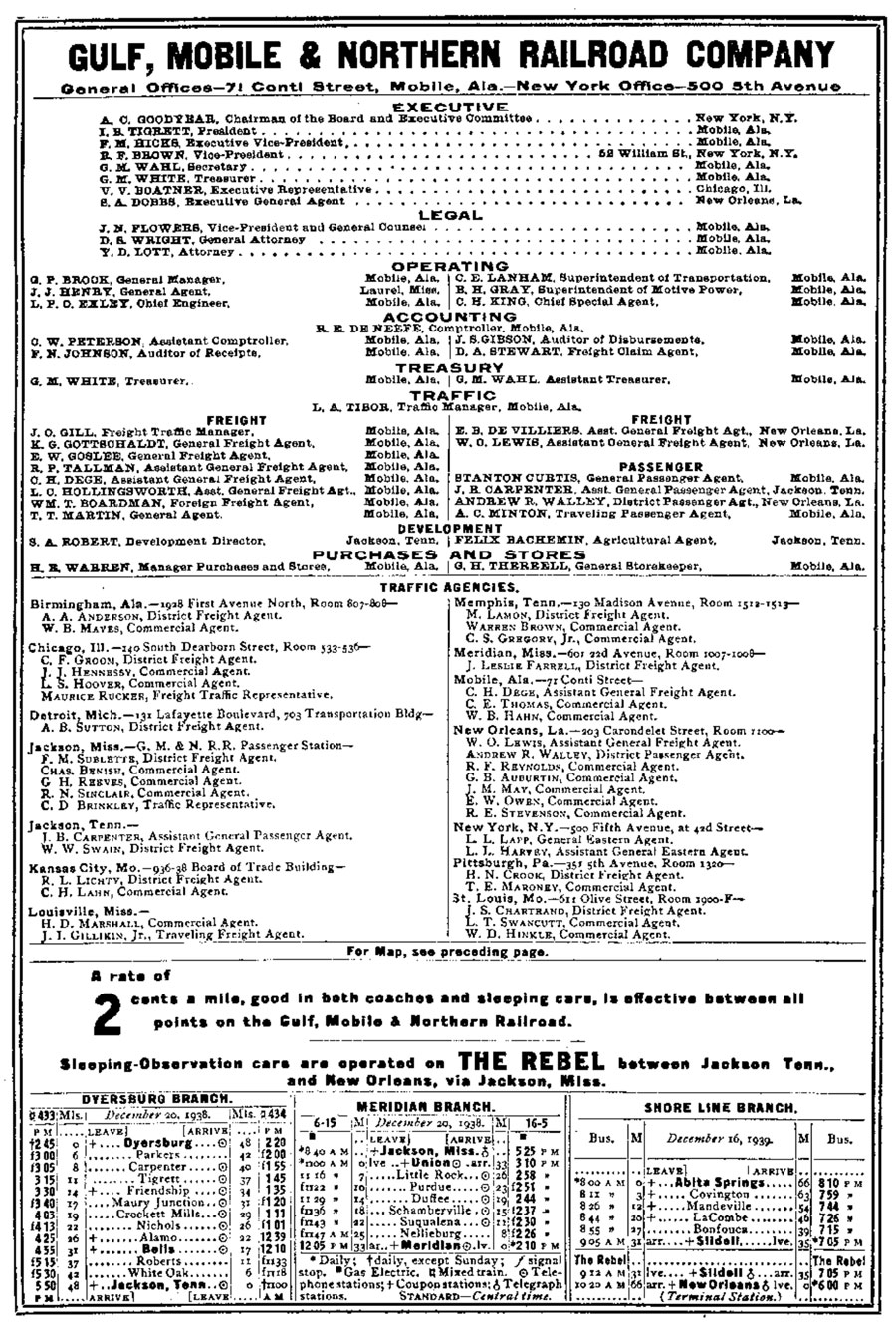
1940 Official Guide ad / collection

1940 Official Guide ad / collection

company letterhead / collection


 he 1920's were hard years for the fledgling GM&N, and every effort was made to control costs and attract more traffic. A rather unique customer relations ploy was devised by Glen P. Brock, who at that time was assistant to the general manager. Brock had letterheads printed up with a photo of the road's new engines, and the names of the train crews. The crews wrote to the customers whose cars were on their trains, thanked them for the business and assured them of careful handling and fast service.
he 1920's were hard years for the fledgling GM&N, and every effort was made to control costs and attract more traffic. A rather unique customer relations ploy was devised by Glen P. Brock, who at that time was assistant to the general manager. Brock had letterheads printed up with a photo of the road's new engines, and the names of the train crews. The crews wrote to the customers whose cars were on their trains, thanked them for the business and assured them of careful handling and fast service.
R. R. "Dick" Wallin / Gulf, Mobile & Ohio: Color Pictorial / 1996
 Clippings
Clippings

from Gulf Mobile & Ohio Historical Society News
/ collection





Links / Sources
- Gulf, Mobile & Ohio Historical Society
- Wikipedia article for Gulf, Mobile & Northern
- Mississippi Rails Gulf, Mobile & Northern page
- James Lemly, The Gulf, Mobile And Ohio: A Railroad That Had to Expand or Expire, 1953
- Historical Guide to North American Railroads - Second Edition (Kalmbach, 2000) 185-6
- George Drury, Guide to North American Steam Locomotives (Kalmbach, 1993) 199-200
- Steam locomotive roster data courtesy of Allen Stanley at Railroad Data Exchange
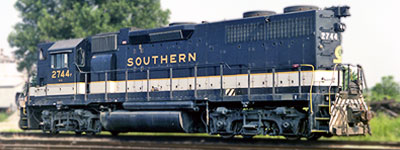
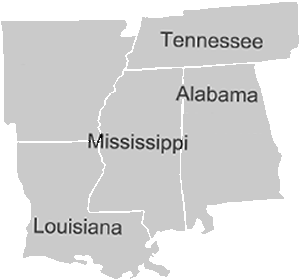












 Gulf Mobile & Northern locomotive roster post 1900
Gulf Mobile & Northern locomotive roster post 1900






